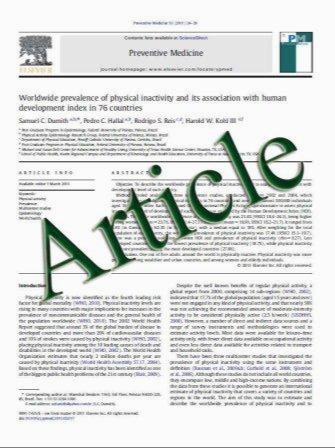Accuracy of unidimensional and volumetric ultrasound measurements in predicting good pathological response to neoadjuvant chemotherapy in breast cancer patients
- نوع فایل : کتاب
- زبان : انگلیسی
- مؤلف : I. Gounaris E. Provenzano A. L. Vallier L. Hiller M. Iddawela S. Hilborne K. Taylor P. Britton H. M. Earl R. Sinnatamby
- چاپ و سال / کشور: 2011
Description
Pathological complete response (pCR) is an important predictor of long-term survival in patients with breast cancer receiving neoadjuvant chemotherapy (NAC). At present, the accuracy of traditional radiological assessments during treatment in predicting pCR is poor. Unidimensional and 3D volumetric ultrasound measurements prior to, after 4 cycles (mid-treatment), and at the end of 8 cycles (end-treatment) of chemotherapy were available from a subset of 55 patients enrolled in Neo-tAnGo, a National Cancer Research Network (NCRN) UK neoadjuvant chemotherapy breast cancer trial. Proportional changes in longest diameter (LD) and volume as well as absolute residual size thresholds were examined for their ability to predict pCR or pCR plus minimal residual disease (pCR/MRD). Sensitivity, specificity, positive (PPV) and negative predictive values (NPV) and likelihood ratios (LRs) were calculated. Receiver-operator characteristic (ROC) curves and logistic regression models were also constructed. At mid-treatment, neither complete radiological response, nor proportional LD or volume changes were found predictive of final pCR. A small residual tumour volume (B1 cm3 vs.[1 cm3) at mid-treatment, however, was associated with pCR/MRD (P = 0.014). Sensitivity, specificity, PPV, NPV, LR? and LR- values were 61%, 77%, 61%, 77%, 2.62 and 0.51, respectively. The area under the ROC curve was 0.689 (P = 0.03). Volume B1 cm3 at mid-treatment was found significant in a logistic regression (OR: 0.194, P = 0.011). At end-treatment, no ultrasound measurements were found predictive of pCR or pCR/MRD. In conclusion, proportional tumour size changes (the basis of the RECIST criteria) were not found predictive of good pathological response, although residual volume B1 cm3 at mid-treatment was found to be predictive of pCR/MRD. However, multiple volume and LD thresholds were examined and uncorrected P values presented, increasing the possibility of type I errors. Replication in an independent dataset is required.
Breast Cancer Res Treat (2011) 127:459–469 DOI 10.1007/s10549-011-1454-x Received: 3 February 2011 / Accepted: 11 March 2011 / Published online: 25 March 2011 Springer Science+Business Media, LLC. 2011


